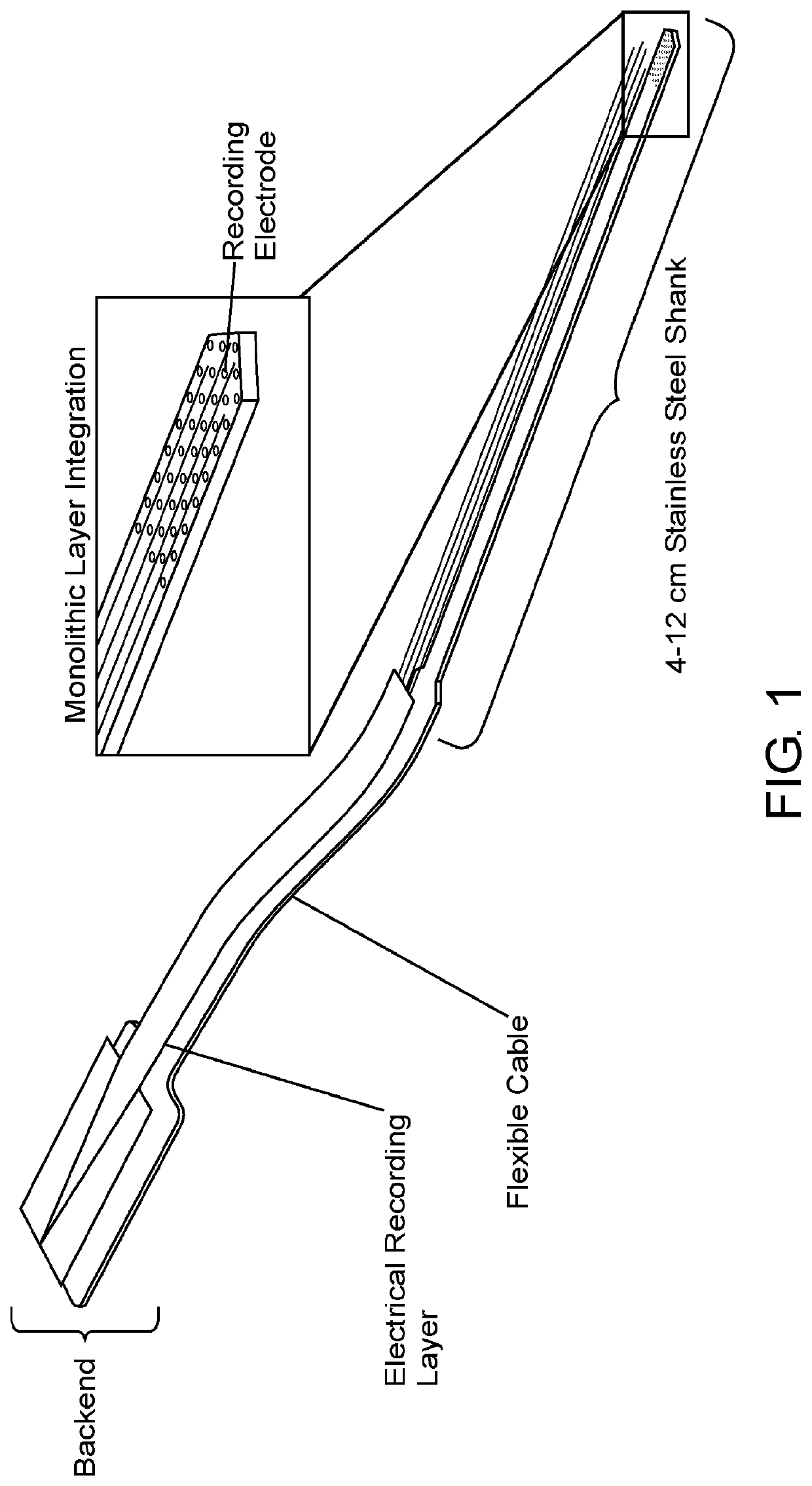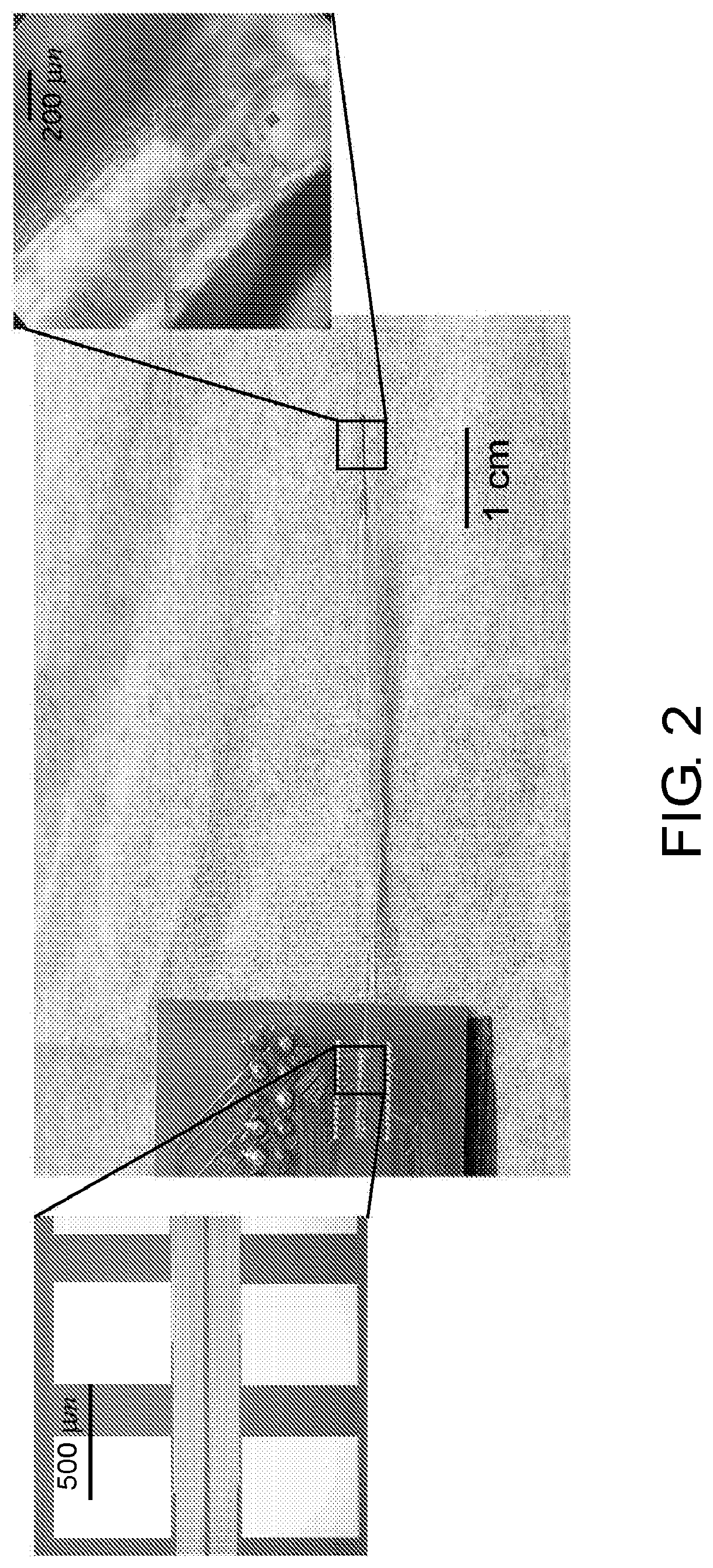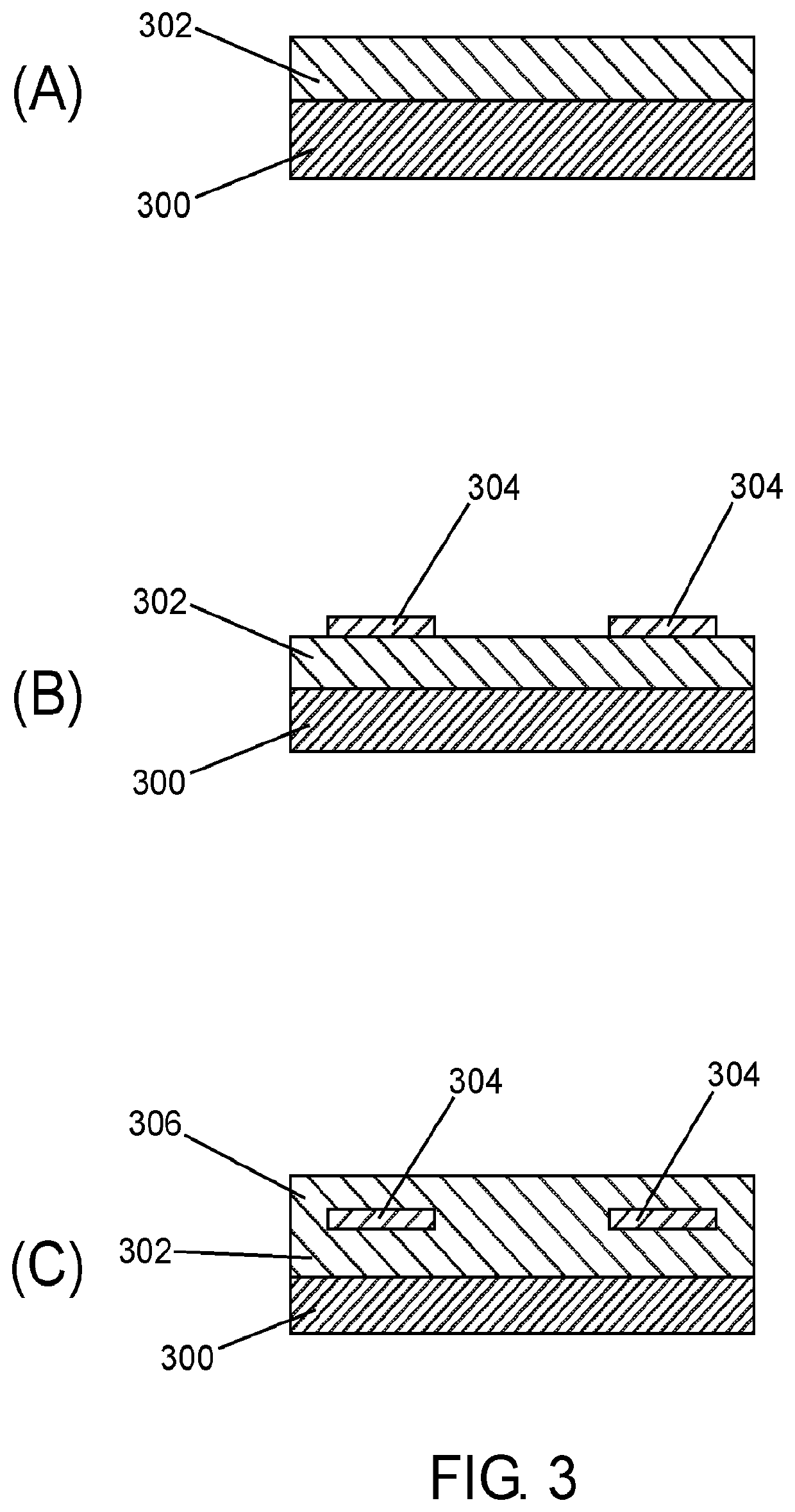High-density implantable neural probes
a neural probe and high-density technology, applied in the field of high-density implantable neural probes, can solve the problems of limiting the channel density, reducing stainless steel micromachining has not been developed as much as silicon microfabrication, etc., to achieve the effect of improving mechanical properties, and improving the flexural strength and endurance limi
- Summary
- Abstract
- Description
- Claims
- Application Information
AI Technical Summary
Benefits of technology
Problems solved by technology
Method used
Image
Examples
second embodiment
[0015]Disclosed herein is a novel neural probe design for non-human-primates based on two embodiments, one embodiment comprising post-fabrication integration of high-density neural probes with stainless steel substrates and a second embodiment comprising monolithic integration of high density Parylene-based probes with stainless steel material platform.
[0016]In preferred embodiments, the neural probes of this invention take advantage of two different material platforms, namely, a polymer, preferably Parylene C, and stainless steel. The probes are preferably primarily fabricated on Parylene C, a polymer commonly used in biomedical devices due to its flexibility, mechanical strength, and bio-compatibility. While the flexibility of neural probes composed of Parylene are suitable for chronic recording, the low rigidity of such probes poses difficulties in implantation due to buckling. Different bioresorbable coatings have been proposed to provisionally increase the rigidity of such flex...
first embodiment
[0017]A first embodiment comprises post-fabrication assembly of high density flexible polymer probes on stainless steel shuttles using a bioresorbable adhesive. The stainless steel shuttle provides the rigidity for insertion and it can then be retrieved after implantation because the bioresorbable adhesive is dissolved once the probe is implanted. This enables the potential for long-term high-density recording using these probes in primate brains, thus minimizing tissue damage and glial scarring. In this embodiment, the neural probes and methods of manufacture integrate a flexible polymer-based probe on a stainless steel shuttle. Polyethylene Glycol (PEG) is preferably used as a bioresorbable adhesive to hold the polymer-based probe on the shuttle during implantation. The stainless steel shuttle can be retracted post-implantation after the PEG dissolves inside the brain, releasing the flexible probe. Using this technique, the polymer-based probe can be mounted on a 3D stainless stee...
PUM
| Property | Measurement | Unit |
|---|---|---|
| inner diameter | aaaaa | aaaaa |
| inner diameter | aaaaa | aaaaa |
| length | aaaaa | aaaaa |
Abstract
Description
Claims
Application Information
 Login to View More
Login to View More - R&D
- Intellectual Property
- Life Sciences
- Materials
- Tech Scout
- Unparalleled Data Quality
- Higher Quality Content
- 60% Fewer Hallucinations
Browse by: Latest US Patents, China's latest patents, Technical Efficacy Thesaurus, Application Domain, Technology Topic, Popular Technical Reports.
© 2025 PatSnap. All rights reserved.Legal|Privacy policy|Modern Slavery Act Transparency Statement|Sitemap|About US| Contact US: help@patsnap.com



